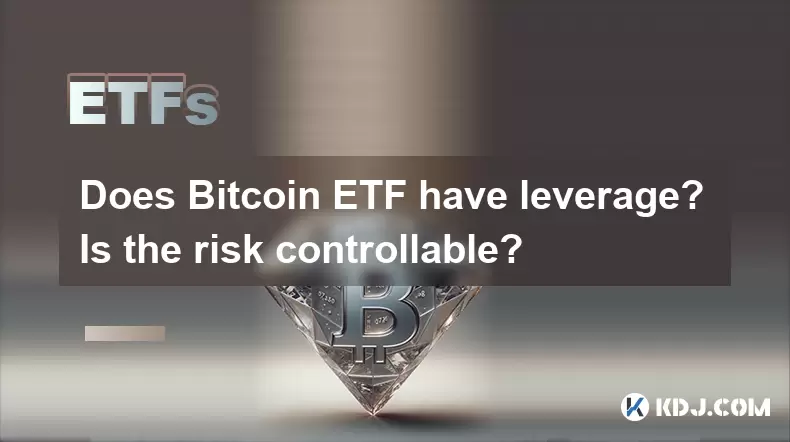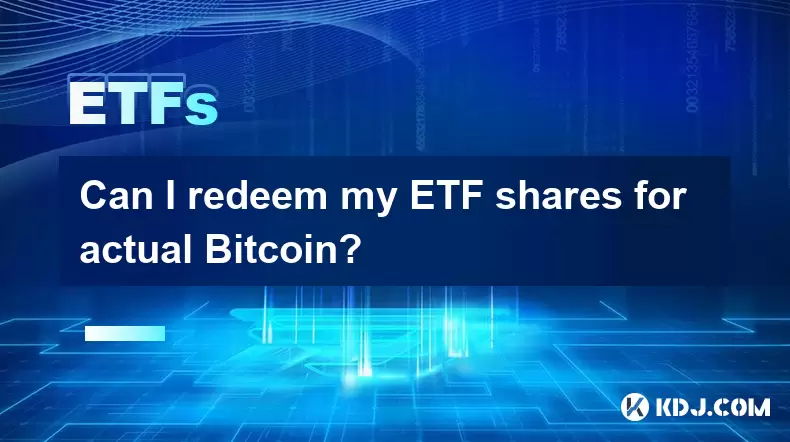-
 Bitcoin
Bitcoin $114700
-3.36% -
 Ethereum
Ethereum $3619
-6.51% -
 XRP
XRP $2.926
-7.66% -
 Tether USDt
Tether USDt $0.9998
-0.02% -
 BNB
BNB $768.6
-4.90% -
 Solana
Solana $168.2
-7.52% -
 USDC
USDC $0.9999
0.00% -
 Dogecoin
Dogecoin $0.2045
-9.02% -
 TRON
TRON $0.3243
-0.27% -
 Cardano
Cardano $0.7208
-8.45% -
 Hyperliquid
Hyperliquid $39.74
-9.17% -
 Stellar
Stellar $0.3882
-8.79% -
 Sui
Sui $3.481
-11.93% -
 Chainlink
Chainlink $16.52
-9.04% -
 Bitcoin Cash
Bitcoin Cash $556.7
-4.79% -
 Hedera
Hedera $0.2444
-11.40% -
 Avalanche
Avalanche $21.96
-8.51% -
 Ethena USDe
Ethena USDe $1.001
-0.02% -
 UNUS SED LEO
UNUS SED LEO $8.950
0.15% -
 Toncoin
Toncoin $3.425
-2.33% -
 Litecoin
Litecoin $104.4
-5.94% -
 Shiba Inu
Shiba Inu $0.00001212
-7.49% -
 Polkadot
Polkadot $3.630
-6.98% -
 Uniswap
Uniswap $9.165
-10.12% -
 Monero
Monero $306.8
-3.10% -
 Dai
Dai $0.9999
-0.01% -
 Bitget Token
Bitget Token $4.360
-3.43% -
 Pepe
Pepe $0.00001049
-9.59% -
 Cronos
Cronos $0.1352
-8.67% -
 Aave
Aave $256.5
-8.03%
Does Bitcoin ETF have leverage? Is the risk controllable?
Leveraged Bitcoin ETFs amplify gains and losses, using derivatives to track multiples of Bitcoin's daily performance, posing significant risks due to volatility and daily resets.
May 16, 2025 at 08:28 am

Introduction to Bitcoin ETFs
Bitcoin Exchange Traded Funds (ETFs) are investment vehicles that track the price of Bitcoin and are traded on traditional stock exchanges. They offer investors exposure to Bitcoin without the need to directly own the cryptocurrency. The concept of leverage within these ETFs adds another layer of complexity and potential risk. Leverage in Bitcoin ETFs can amplify both gains and losses, making it crucial for investors to understand its mechanics and manageability.
What is Leverage in Bitcoin ETFs?
Leverage in the context of Bitcoin ETFs refers to the use of borrowed funds to increase the potential return of an investment. A leveraged Bitcoin ETF aims to deliver multiples of the daily performance of Bitcoin. For instance, a 2x leveraged Bitcoin ETF seeks to return twice the daily performance of Bitcoin, while a -1x leveraged ETF aims to deliver the inverse of Bitcoin's daily performance.
Leveraged ETFs use financial derivatives such as futures contracts, options, and swaps to achieve their objectives. These instruments allow the ETF to gain exposure to Bitcoin's price movements without directly holding the cryptocurrency. The degree of leverage can vary, with common products offering 1.5x, 2x, or even 3x the daily performance of Bitcoin.
Risks Associated with Leveraged Bitcoin ETFs
The primary risk associated with leveraged Bitcoin ETFs is the potential for magnified losses. Since these ETFs aim to deliver multiples of the daily performance, any adverse movement in Bitcoin's price is amplified. For example, if Bitcoin drops by 5% in a day, a 2x leveraged ETF would theoretically drop by 10%.
Another significant risk is the effect of compounding over time. Leveraged ETFs reset their leverage daily, which means their performance over longer periods can deviate significantly from the expected multiple of Bitcoin's performance. This can lead to unexpected results, especially in volatile markets.
Volatility in Bitcoin's price can exacerbate these risks. The cryptocurrency market is known for its rapid and significant price swings, which can be particularly dangerous for leveraged positions. Investors need to be aware that while leverage can increase potential returns, it also heightens the risk of substantial losses.
Controllability of Risk in Leveraged Bitcoin ETFs
Risk management in leveraged Bitcoin ETFs involves understanding and mitigating the inherent risks. Position sizing is a critical aspect of risk control. Investors should only allocate a small portion of their portfolio to leveraged ETFs to limit potential losses.
Diversification can also help manage risk. By spreading investments across different asset classes and not concentrating solely on leveraged Bitcoin ETFs, investors can reduce their exposure to the volatility of Bitcoin.
Monitoring and rebalancing are essential practices for managing leveraged positions. Since these ETFs reset daily, regular monitoring can help investors adjust their positions in response to market movements. Rebalancing involves adjusting the portfolio to maintain the desired level of exposure to Bitcoin and other assets.
Stop-loss orders can be another tool for controlling risk. By setting a stop-loss order, investors can automatically sell their position if the ETF's price falls to a certain level, limiting potential losses.
Practical Example of Using a Leveraged Bitcoin ETF
To illustrate how to use a leveraged Bitcoin ETF, consider the following steps:
Choose a Leveraged ETF: Research and select a leveraged Bitcoin ETF that aligns with your investment goals. For example, you might choose a 2x leveraged ETF if you believe Bitcoin's price will rise.
Determine Position Size: Decide how much of your portfolio you are willing to allocate to this ETF. A common rule of thumb is to limit leveraged positions to no more than 5-10% of your total portfolio.
Place the Order: Use your brokerage account to buy the chosen ETF. Ensure you understand the fees and costs associated with the ETF.
Monitor the Position: Regularly check the performance of the ETF and Bitcoin's price. Be prepared to adjust your position if necessary.
Set a Stop-Loss Order: Consider setting a stop-loss order to automatically sell the ETF if its price drops to a predetermined level, helping to manage potential losses.
Rebalance as Needed: Periodically review your portfolio and rebalance to maintain your desired exposure to Bitcoin and other assets.
Regulatory Considerations for Leveraged Bitcoin ETFs
Regulatory oversight plays a crucial role in the operation of leveraged Bitcoin ETFs. In the United States, the Securities and Exchange Commission (SEC) regulates these products. The SEC has strict guidelines on how leveraged ETFs can be marketed and sold to investors, aiming to protect them from the high risks associated with these instruments.
Disclosure requirements are a key aspect of regulatory oversight. Leveraged ETFs must clearly disclose their objectives, risks, and the use of leverage in their prospectuses. Investors should carefully read these documents to understand the potential risks and rewards.
Compliance with regulations is essential for the continued operation of leveraged Bitcoin ETFs. Any changes in regulatory policies can impact the availability and structure of these products, so investors should stay informed about regulatory developments.
Frequently Asked Questions
Q: Can I hold a leveraged Bitcoin ETF for the long term?
A: While it is possible to hold a leveraged Bitcoin ETF for the long term, it is generally not recommended due to the effects of daily leverage reset and compounding. These factors can lead to significant deviations from the expected performance over time, making leveraged ETFs more suitable for short-term trading strategies.
Q: Are there any tax implications specific to leveraged Bitcoin ETFs?
A: Yes, leveraged Bitcoin ETFs can have unique tax implications. Gains from these ETFs may be treated as ordinary income rather than capital gains, depending on the holding period and the specific structure of the ETF. It's advisable to consult with a tax professional to understand the potential tax consequences.
Q: How do I choose between a leveraged and a non-leveraged Bitcoin ETF?
A: The choice between a leveraged and a non-leveraged Bitcoin ETF depends on your risk tolerance and investment goals. If you are seeking higher potential returns and are willing to accept higher risk, a leveraged ETF might be suitable. However, if you prefer a more conservative approach with lower risk, a non-leveraged ETF would be a better choice.
Q: Can I use leveraged Bitcoin ETFs in a retirement account?
A: Yes, you can use leveraged Bitcoin ETFs in a retirement account, such as an IRA, but it's important to consider the high risk associated with these products. The potential for significant losses could impact your retirement savings, so it's crucial to assess whether the risk aligns with your long-term financial goals.
Disclaimer:info@kdj.com
The information provided is not trading advice. kdj.com does not assume any responsibility for any investments made based on the information provided in this article. Cryptocurrencies are highly volatile and it is highly recommended that you invest with caution after thorough research!
If you believe that the content used on this website infringes your copyright, please contact us immediately (info@kdj.com) and we will delete it promptly.
- Bitcoin, Ethereum, and Investor Behavior: A New York Minute on Crypto Trends
- 2025-08-01 15:10:12
- Tether's Q2 Triumph: USDT Supply Soars Amidst Profit Surge!
- 2025-08-01 15:10:12
- Ethereum ETF Holdings: A Corporate Treasury Revolution?
- 2025-08-01 15:30:12
- Ethereum's Wild Ride: Funding Rates, Price Drops, and Retail to the Rescue!
- 2025-08-01 15:30:12
- Ethereum Under Pressure: Crypto Market Drop Explained
- 2025-08-01 15:35:11
- Ethereum ETF Mania: Inflows Surge, Market Rises, What's Next?
- 2025-08-01 15:35:11
Related knowledge

What is the best platform to trade Bitcoin ETFs?
Jul 23,2025 at 04:14am
Understanding Bitcoin ETFs and Their Role in TradingBitcoin Exchange-Traded Funds (ETFs) have gained significant traction among traditional and crypto...

What is the best platform to trade Bitcoin ETFs?
Jul 17,2025 at 03:50pm
Understanding Bitcoin ETFs and Their Role in the MarketBitcoin Exchange-Traded Funds (ETFs) are investment vehicles that track the price of Bitcoin wi...

Will a Bitcoin ETF be available in my 401(k)?
Jul 17,2025 at 10:42pm
What is a Bitcoin ETF?A Bitcoin ETF (Exchange-Traded Fund) is an investment vehicle that tracks the price of Bitcoin without requiring investors to di...

Who is the authorized participant for a Bitcoin ETF?
Jul 18,2025 at 12:42am
Understanding the Role of Authorized Participants in Bitcoin ETFsIn the context of Bitcoin Exchange-Traded Funds (ETFs), an authorized participant (AP...

Is the Bitcoin ETF a bubble?
Jul 20,2025 at 06:57am
Understanding the Bitcoin ETF ConceptA Bitcoin Exchange-Traded Fund (ETF) is a financial product that aims to track the price of Bitcoin without requi...

Can I redeem my ETF shares for actual Bitcoin?
Jul 17,2025 at 03:14pm
Understanding ETF Shares and Their Relation to BitcoinExchange-Traded Funds (ETFs) have become a popular investment vehicle for those looking to gain ...

What is the best platform to trade Bitcoin ETFs?
Jul 23,2025 at 04:14am
Understanding Bitcoin ETFs and Their Role in TradingBitcoin Exchange-Traded Funds (ETFs) have gained significant traction among traditional and crypto...

What is the best platform to trade Bitcoin ETFs?
Jul 17,2025 at 03:50pm
Understanding Bitcoin ETFs and Their Role in the MarketBitcoin Exchange-Traded Funds (ETFs) are investment vehicles that track the price of Bitcoin wi...

Will a Bitcoin ETF be available in my 401(k)?
Jul 17,2025 at 10:42pm
What is a Bitcoin ETF?A Bitcoin ETF (Exchange-Traded Fund) is an investment vehicle that tracks the price of Bitcoin without requiring investors to di...

Who is the authorized participant for a Bitcoin ETF?
Jul 18,2025 at 12:42am
Understanding the Role of Authorized Participants in Bitcoin ETFsIn the context of Bitcoin Exchange-Traded Funds (ETFs), an authorized participant (AP...

Is the Bitcoin ETF a bubble?
Jul 20,2025 at 06:57am
Understanding the Bitcoin ETF ConceptA Bitcoin Exchange-Traded Fund (ETF) is a financial product that aims to track the price of Bitcoin without requi...

Can I redeem my ETF shares for actual Bitcoin?
Jul 17,2025 at 03:14pm
Understanding ETF Shares and Their Relation to BitcoinExchange-Traded Funds (ETFs) have become a popular investment vehicle for those looking to gain ...
See all articles

























































































